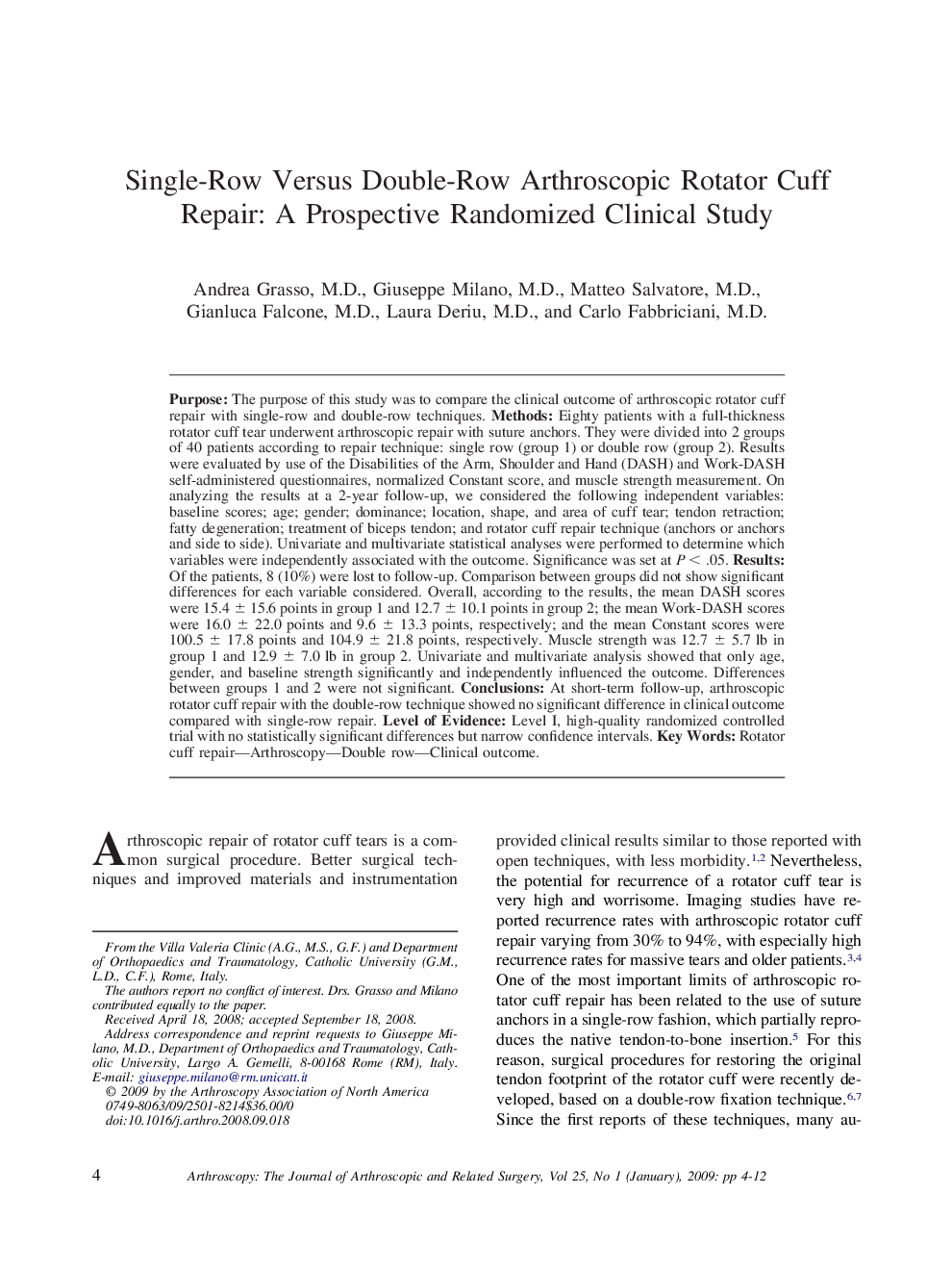| Article ID | Journal | Published Year | Pages | File Type |
|---|---|---|---|---|
| 4046733 | Arthroscopy: The Journal of Arthroscopic & Related Surgery | 2009 | 9 Pages |
PurposeThe purpose of this study was to compare the clinical outcome of arthroscopic rotator cuff repair with single-row and double-row techniques.MethodsEighty patients with a full-thickness rotator cuff tear underwent arthroscopic repair with suture anchors. They were divided into 2 groups of 40 patients according to repair technique: single row (group 1) or double row (group 2). Results were evaluated by use of the Disabilities of the Arm, Shoulder and Hand (DASH) and Work-DASH self-administered questionnaires, normalized Constant score, and muscle strength measurement. On analyzing the results at a 2-year follow-up, we considered the following independent variables: baseline scores; age; gender; dominance; location, shape, and area of cuff tear; tendon retraction; fatty degeneration; treatment of biceps tendon; and rotator cuff repair technique (anchors or anchors and side to side). Univariate and multivariate statistical analyses were performed to determine which variables were independently associated with the outcome. Significance was set at P < .05.ResultsOf the patients, 8 (10%) were lost to follow-up. Comparison between groups did not show significant differences for each variable considered. Overall, according to the results, the mean DASH scores were 15.4 ± 15.6 points in group 1 and 12.7 ± 10.1 points in group 2; the mean Work-DASH scores were 16.0 ± 22.0 points and 9.6 ± 13.3 points, respectively; and the mean Constant scores were 100.5 ± 17.8 points and 104.9 ± 21.8 points, respectively. Muscle strength was 12.7 ± 5.7 lb in group 1 and 12.9 ± 7.0 lb in group 2. Univariate and multivariate analysis showed that only age, gender, and baseline strength significantly and independently influenced the outcome. Differences between groups 1 and 2 were not significant.ConclusionsAt short-term follow-up, arthroscopic rotator cuff repair with the double-row technique showed no significant difference in clinical outcome compared with single-row repair.Level of EvidenceLevel I, high-quality randomized controlled trial with no statistically significant differences but narrow confidence intervals.
